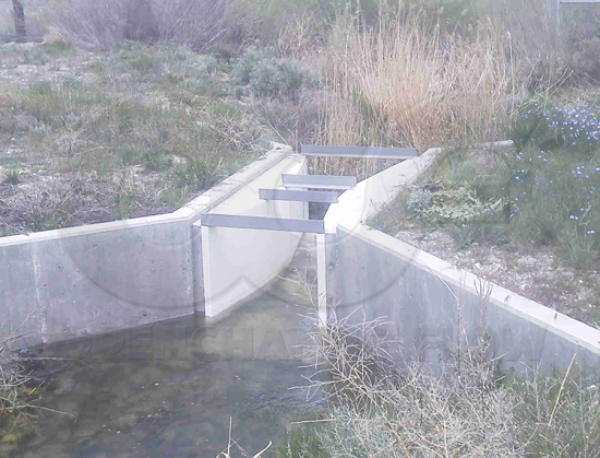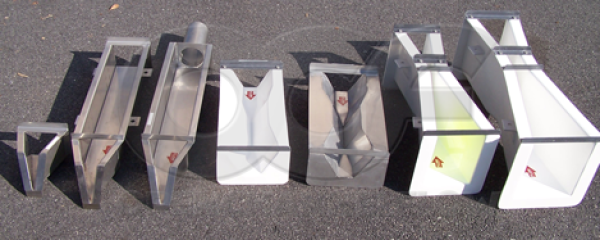This website uses a variety of cookies, which you consent to if you continue to use this site. You can read our Privacy Policy for
details about how these cookies are used, and to grant or withdraw your consent for certain types of cookies.
Methods of Measuring Flows in Open Channels
As man’s need to use and measure water has increased, a number of different and varied methods have been developed to measure the flow of water in open channels. Open channels are those natural and man-made structures through which water flows with a free surface.
Examples of such structures include streams, rivers, irrigation ditches, canals, partially full pipes, and water conveyance flumes.
Some of the more common methods currently in use to measure open channel flows are:
- Timed Gravimetric
- Tracer-Dilution
- Area-Velocity
- Manning’s Equation / (Gauckler-Manning-Strickler Formula)
- Hydraulic Structures (Flumes & Weirs)
Timed Gravimetric
The complete flow stream is collected a container for a fixed length of time. The contents of the container are then weighed to determine the volume of water. This in turn allow for the direct calculation of the flow rate for the period observed.
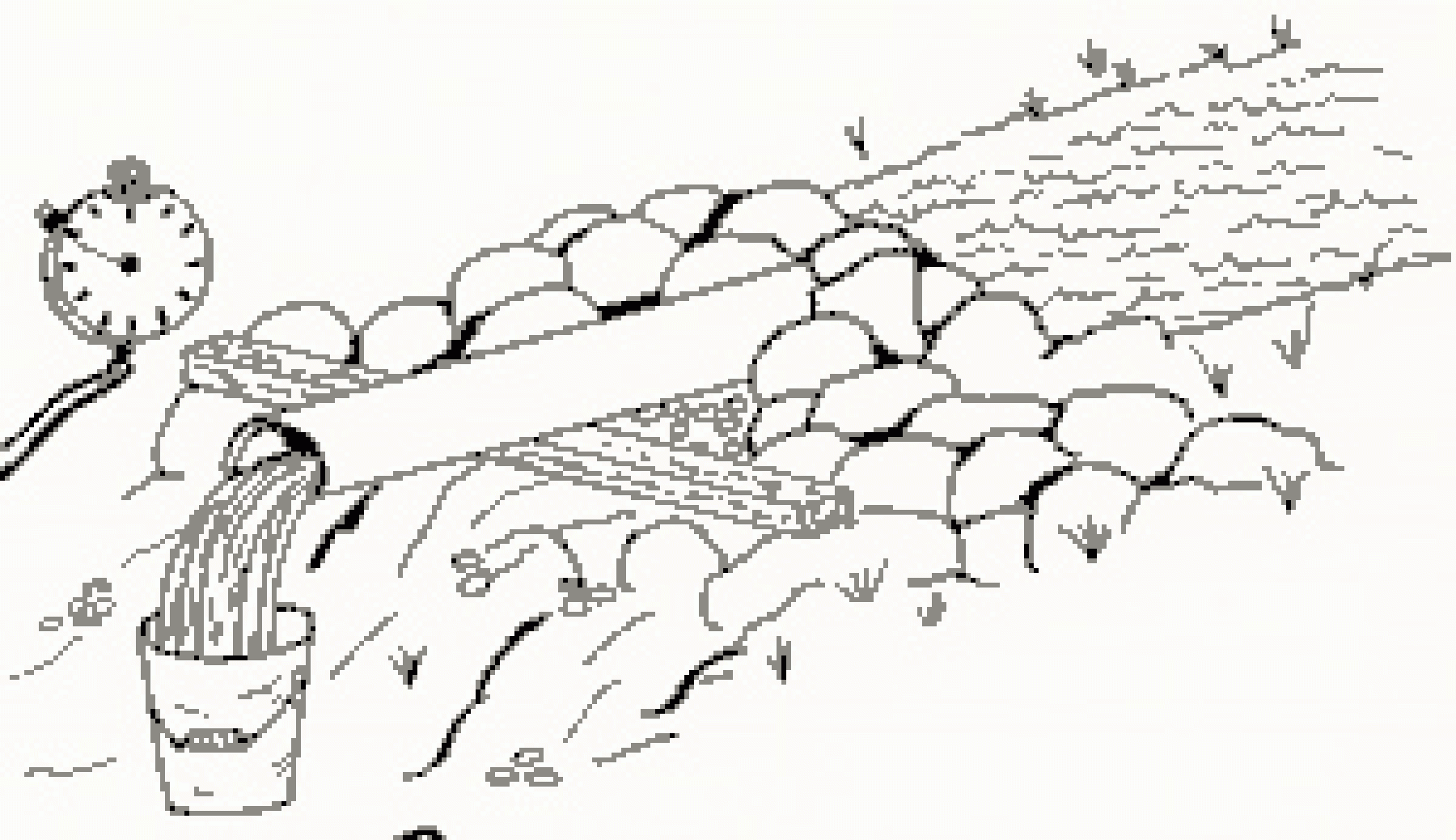
The timed gravimetric flow method is only practical for small streams (25 to 30 gallons or less) and only provides a “snap-shot” of the flow rates. It is not well suited to continuous flow measurement. The timed gravimetric flow method is also sometimes refered to as the "bucket and stopwatch" method.
Tracer-Dilution
The tracer-dilution method consists of adding a known amount of concentrated tracer at a constant rate to the flow stream. Chemical analysis is used to determine the dilution of the uniformly mixed concentrate at some downstream point. It is important that the tracer be added at a known and constant discharge rate.
An advantage of the tracer-dilution method is that no measurements of the flow channel geometry are required.
Tracers may be color-dilution or salt-dilution, with the former suitable for measuring small to large flows (the cost of the dye being relatively low) and the latter suitable for turbulent streams of small to medium size where other methods of flow measurement are impractical.
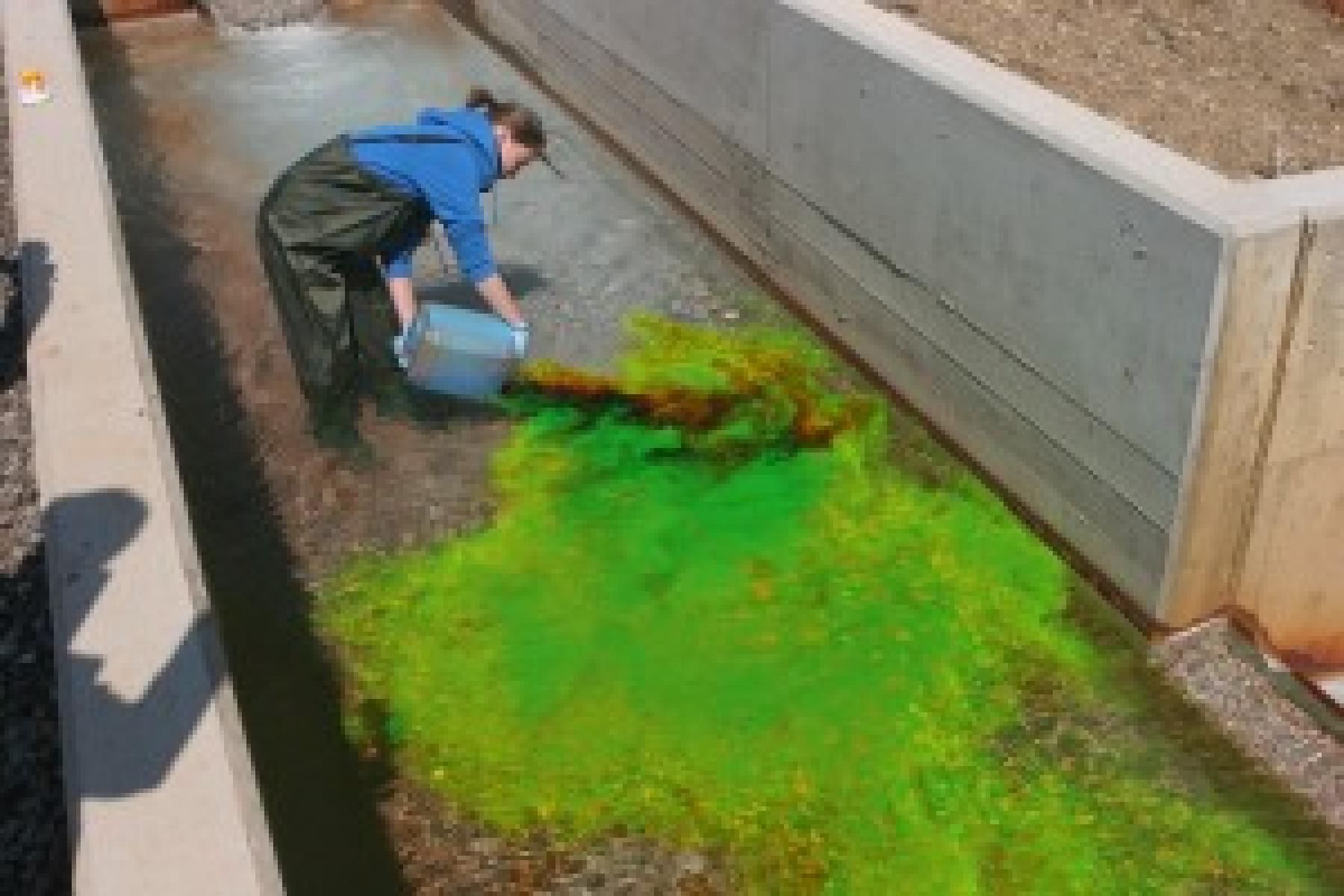
The tracer-dilution method requires specialized equipment and experienced personnel. As a result, it is relatively expensive method of measuring flow rates.
Tracer-dilution methods can vary considerably in accuracy, from +/- 1% to over 30%, depending upon the equipment used, experience of the personnel, and the accuracy of the measuring equipment.
Area-Velocity Method
Measurement of the mean flow velocity (commonly by doppler or electromagnetic field) over a determined cross-sectional area (the depth of which is determined by pressure transducer or ultrasonic sensor) yields the stream flow rate.

Recent tests performed by the Bureau of Reclamation found that even in a controlled, laboratory environment, measurement error of +/-10% are possible. Under field conditions, this error can reasonably be assumed to greater than those observed in laboratory conditions.
Manning’s Equation (Gauckler-Manning-Strickler Formula)
Manning’s Equation, as it is commonly referred to in the United States, is an empirically derived formula for estimating the average velocity of a liquid flowing in an open channel. The formula utilizes the cross-sectional average velocity, hydraulic radius, roughness coefficient, and the slope of the channel.
The equation is used to measure flow in locations where the construction of a hydraulic structure (flume or weir) is impractical.
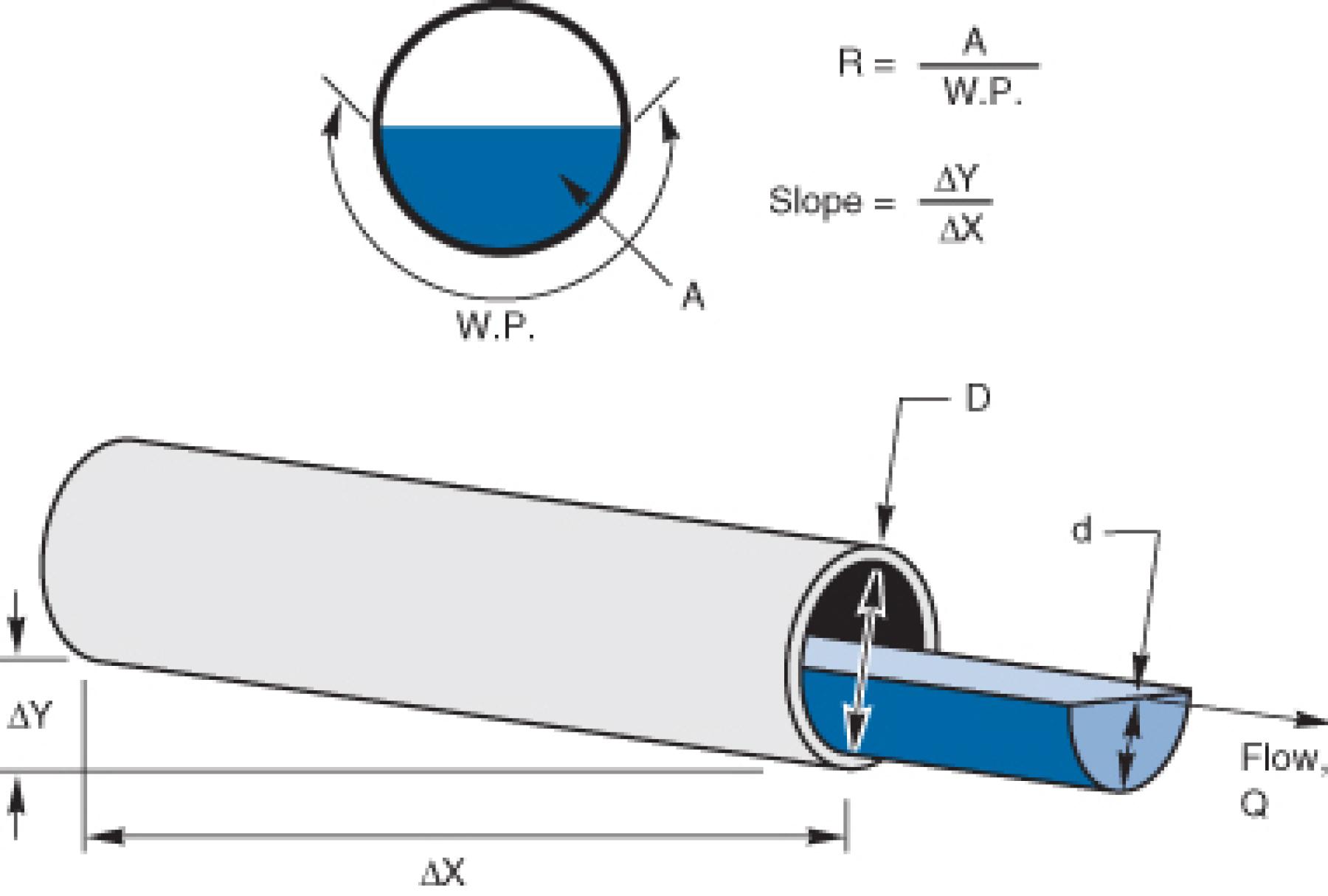
Much of the difficulty in using the equation is determining the proper Gauckley-Manning coefficient, n, to apply. In natural channels, n values can vary greatly along a given stretch. As a result, Manning’s Equation should not be expected to provide results better than +/- 25-30% under field conditions.
In the United States, this method is most commonly referred to as Manning’s Equation, while in Europe it is more often referred to as the Gauckler-Manning-Strickler Formula.
Manning’s Equation can be used for continuous flow measurement through the use of portable or permanent flow meters or it can be used for spot flow measurements.
Hydraulic Structures
In general, a hydraulic structure is anything that can be used to divert, dam, restrict, or otherwise manage the flow of open channel waters. For flow measurement purposed, a hydraulic structure is a fixed geometry device that is placed into the flow so that all of the flow is directed through or over the device.
The device produces a characterized relationship between the liquid level in (flumes) or upstream (weirs) of the device and the flow rate at a single, defined location under free-flow conditions. Under submerged flow conditions, a second, downstream point of measurement must also be used.

The free-flow point of measurement is termed the Ha location, while the secondary, downstream point of measurement used for submerged flow measurement is termed the Hb location.
As a hydraulic structure directly produces a characterized relationship between level and flow, it is termed a primary device. When the liquid level generated by the hydraulic structure is measured by an additional device, that device (or flow meter) is termed the secondary device.

Hydraulic structures can generally be divided into two categories: flumes and weirs. Flumes are more adaptable in their sizing, configurations, and installation, while weirs, on channels capable of developing a proper weir pools, tend to be less expensive. Of the two, weirs show greater laboratory accuracy (+/-2-5%) than flumes (+/-2-6%), although in practice and under field conditions, the total system accuracies tend to be similar at +/-10%.
Modern mechanical (float) and electronic flow meters (secondary devices) allow for the continuous measurement of hydraulic structure flows. For applications where continuous measurement is not required or possible, head / level / staff gauges can be used to aid the operator in determining the flow rate through the use of published rating or discharge tables.
Related Blog Posts
Explore more insights in our blog.

LOCATIONS IN ATLANTA, GA & BOISE, ID



